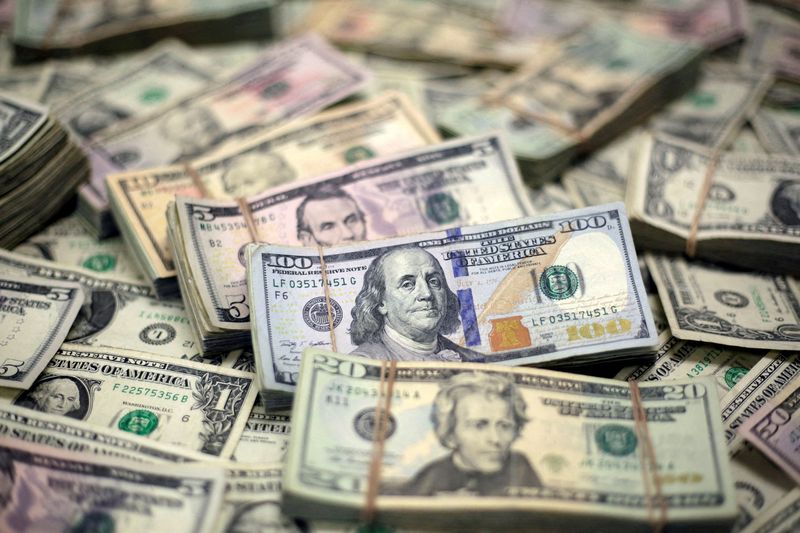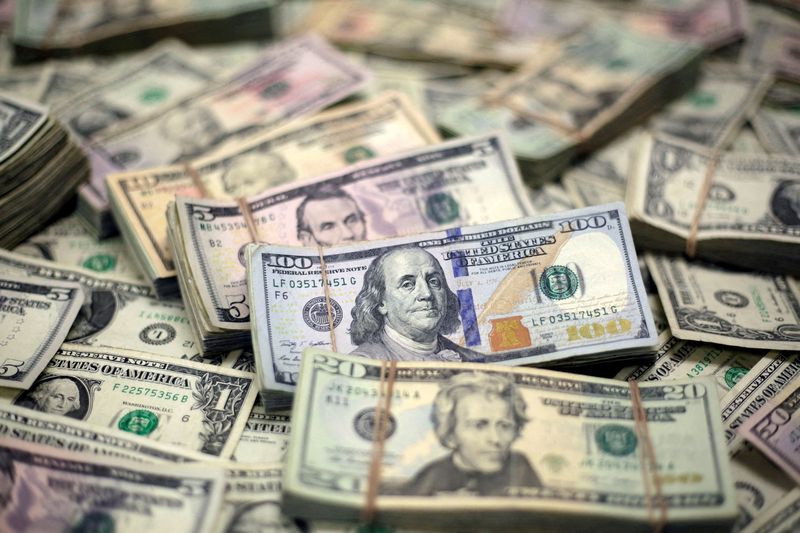
By Karen Brettell
(Reuters) – Safe haven currencies strengthened on Tuesday as Iran launched missiles towards Israel, while the dollar also firmed on data showing a resilient U.S. labor market.
The missiles were fired in retaliation for Israel’s campaign against Tehran’s Hezbollah allies in Lebanon. In response, U.S. President Joe Biden directed the U.S. military to aid Israel’s defense and shoot down missiles aimed at Israel, the White House National Security Council said.
“The market has largely ignored the Middle East conflict in the last month, but a direct Iran-Israel confrontation is always at risk of spiraling,” said Adam Button, chief currency analyst at ForexLive in Toronto.
The Japanese yen was last down 0.04% against the greenback at 143.7 per dollar. The dollar had reached 144.53 yen before news of Israel’s missile launch broke.
Against the Swiss franc, the dollar strengthened 0.2% to 0.847. The Swiss currency rallied on news of the missiles, before reversing gains and trading close to where it had been before the news.
The dollar index rose 0.45% to 101.20.
U.S. data on Tuesday showed a solid economy, a day after Federal Reserve Chair Jerome Powell pushed back against the likelihood of another 50-basis point rate cut when the U.S. central bank meets next month.
U.S. job openings unexpectedly increased in August after two straight monthly decreases, but hiring was consistent with a slowing labor market.
U.S. manufacturing held steady at weaker levels in September, the Institute for Supply Management (ISM) said, but new orders improved and prices paid for inputs declined to a nine-month low. Together with falling interest rates, this bodes well for a rebound in the coming months.
Traders are gauging the likelihood that the Fed will cut rates again by 50 basis points at its Nov. 6-7 meeting.
Powell indicated on Monday the Fed would likely stick with quarter-percentage-point interest rate cuts and was not “in a hurry” after data boosted confidence in ongoing economic growth and consumer spending.
“The door has not been closed on a 50 bps cut, because if economic data tanks, then such a cut is warranted. But Powell clearly thinks markets are overly excited” about upcoming cuts, said Matt Simpson, senior market analyst at City Index.
Traders are pricing in a 38% chance of a 50 basis point reduction in November, up from around 35% on Monday but down from 58% a week ago, CME Group’s (NASDAQ:CME) FedWatch Tool showed.
The U.S. central bank on Sept. 18 cut rates by 50 basis points, which Powell called a “recalibration” to account for the sharp decline in inflation since last year.
The ISM’s non-manufacturing report on Thursday and Friday’s closely watched government jobs report for September are the next major U.S. economic releases.
U.S. East Coast and Gulf Coast dockworkers began a strike on Tuesday, their first large-scale stoppage in nearly 50 years, which analysts say could hurt U.S. economic growth.
The euro was last down 0.57% at $1.1071, following dovish comments by European Central Bank (ECB) officials.
ECB President Christine Lagarde told parliament that “the latest developments strengthen our confidence that inflation will return to target in a timely manner,” and said this should be reflected in the Oct. 17 policy decision.
Euro zone inflation dipped below 2% for the first time since mid-2021 in September, Eurostat data showed on Tuesday.
Traders are also focused on Japan’s new government. Prime Minister Shigeru Ishiba, seen as a monetary policy hawk, on Tuesday unveiled his cabinet as he seeks to heal party divisions and secure a national mandate with an Oct. 27 snap election.

Bank of Japan policymakers discussed the need to go slow in raising interest rates, a summary of their September meeting showed, reducing the chance of a near-term rate hike.
In cryptocurrencies, bitcoin fell 2.89% to $61,943.
This post is originally published on INVESTING.



